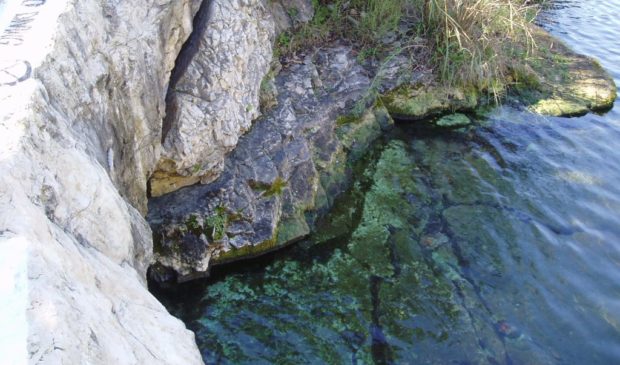Environmental Commission pushes city to join lawsuit over SH 45 SW toll road
Friday, July 8, 2016 by
Cate Malek Citing concerns about whether a proposed state highway improvement project will contaminate Barton Springs, the Environmental Commission recommended that City Council join a lawsuit against the state agencies behind the project.
The proposed toll road, which would be built between MoPac Expressway and FM 1626 and would be known as State Highway 45 SW, could have a number of critical environmental impacts, including affecting water quality and threatening endangered species such as the Barton Springs salamander, city staff said. Council has opposed the construction of SH 45 SW, and now the Environmental Commission has recommended that the city go one step further and join the lawsuit that was initiated by a number of local environmental advocates.
“The people of Austin expect us to protect Barton Springs, and if some people hold some grudges, so be it,” said Commissioner Erin Gooch. “We only have one Barton Springs, and this project could significantly impact it.”
The commission voted 6-3 to recommend that the city join the lawsuit at its meeting on July 7. Commissioners Hank Smith, Andrew Creel and Michael Moya opposed the recommendation.
Although the city of Austin opposes the construction of SH 45 SW, city staff members have been working closely with the two state agencies behind the project, the Texas Department of Transportation (TxDOT) and the Central Texas Regional Mobility Authority (CTRMA). The city’s goal was to provide both agencies with recommendations that might reduce the environmental impacts of the project.
But, although both agencies were cooperative with the city during the assessment process, they failed to adequately account for environmental impacts in their designs for the project, city staff said.
“Our conclusion was that, as it’s designed, it’s still not adequately protective of the environment for this location,” said Environmental Officer Chuck Lesniak. “It’s a highly sensitive area.”
The city’s biggest concern with the proposed highway is that polluted runoff from the road will flow into Barton Springs as well as into other protected sites, such as Flint Ridge Cave. Currently, the area is composed of green space, which means that rainwater is absorbed through the ground into the aquifer below.
But if the road is built, rainwater will collect on the asphalt and wash any contaminants, such as sealant and other chemicals from the asphalt, as well as drips and spills from cars, into Barton Springs. The chemicals would affect the swimming area as well as animals such as the Barton Springs salamander and other threatened species, said Kelly Davis, staff attorney for the Save Our Springs Alliance.
Davis also noted that Flint Ridge Cave is part of the Balcones Canyonlands Preserve and that the proposed construction of SH 45 SW seemed like an “outright violation” of the permit for the land. Because of its concerns over these environmental impacts, the Save Our Springs Alliance is one of the 10 plaintiffs in the lawsuit against TxDOT and CTRMA.
The Environmental Commission shares Davis’ concerns regarding the environmental impacts of the highway project and also called out the lack of an adequate environmental assessment during the design process.
“There was not a good-faith, objective hard look at the environmental consequences of the proposed action or a sufficient explanation of alternatives,” said Chair Marisa Perales.
The three commissioners who opposed joining the lawsuit believed that going to court would prevent productive negotiations with the state. But the rest of the commission overruled their concerns, saying that they didn’t want to set a bad precedent for other projects.
The SH 45 SW project is part of a larger three-part highway improvement plan known as the MoPac South Endeavor Intersections project. Construction on SH 45 SW is scheduled to begin Oct. 1, while construction on the other two parts of the project is slated for December.
The commission and city staff want to ensure that the flawed design process that happened with SH 45 SW doesn’t set a precedent for the rest of the MoPac South Endeavor Intersections project.
“We think that these are all connected projects that under (the National Environmental Policy Act) should have been considered together and looked at the impacts to the aquifer as a whole,” Lesniak said. “We think that’s consistent with the law and not only that, whether or not it’s consistent with the law, it’s the right thing to do.”
Public Domain, https://commons.wikimedia.org/w/index.php?curid=5198820
You're a community leader
And we’re honored you look to us for serious, in-depth news. You know a strong community needs local and dedicated watchdog reporting. We’re here for you and that won’t change. Now will you take the powerful next step and support our nonprofit news organization?







